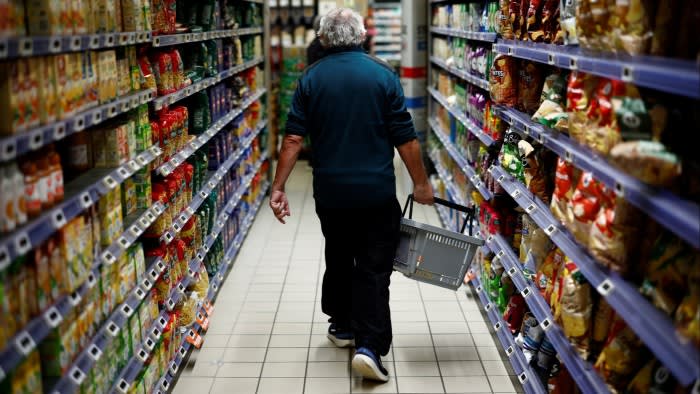Unlock the Editor’s Digest for free
Roula Khalaf, Editor of the FT, selects her favourite stories in this weekly newsletter.
Inflation in September fell below target in the UK and the eurozone, and dropped to the lowest since early 2021 in the US, hurray!
Yet, another common trend that matters a lot for households went largely unnoticed: food inflation ended its steady decline and ticked up.
In the UK, inflation of food and non-alcoholic beverages rose to 1.9 per cent from 1.3 per cent in September, marking the first increase since March 2023, according to official data published this week.
Eurozone food inflation for the same period increased 0.1 percentage point to 1.6 per cent, following no change in August and 16 months of almost uninterrupted decline, official data showed on Thursday.
And in the US, annual food inflation in September rose to 2.3 per cent per cent from 2.1 per cent in the previous month, the largest increase since August 2022.
This comes as wholesale food prices stopped declining at the start of the year and started rising again, according to the FAO index. Trends in food wholesale prices lag consumer prices by a few months as items flow through the supply chain, so what’s coming is not encouraging.
In September, the FAO Food Price Index rose to 124.4 in September 2024, up 3 per cent from August, which marked the largest month-on-month increase since March 2022. Price quotations for all commodities included in the index strengthened, with the increases ranging from 0.4 per cent for the meat price index to 10.4 per cent for sugar, it explained.
“The reasons that food prices are rising again are mainly climate related,” said Tomasz Wieladek, chief European economist at T Rowe Price.
The FAO goes into more detail, quoting worsening crop prospects in Brazil following prolonged dry weather and fires that damaged sugarcane fields in late August, as the main drivers of the increase in global sugar prices. Concerns over lower-than-expected production in major Southeast Asian producing countries were behind the rise in international palm oil price increases. Excessively wet conditions in Canada and the EU caused wheat harvest delays and a sizeable cut to production, pushing up wheat prices.
For policymakers the rise in food inflation matters as “consumers form their inflation expectations based on food price inflation because this is a repeated transaction they face every week,” said Wieladek. This is in line with a paper published by the Bank of England last week that found “over 60 per cent of households report that their inflation perceptions are heavily influenced by food prices”.
Inflation expectations matter for spending behaviour and wage demand. Higher food prices have a disproportionate effect on households because there is little scope to avoid buying groceries, and because what you spend on subsistence comes out of what you can spend on other things.
Admittedly, September’s food inflation was small and barely visible in a chart where food inflation dropped from double-digit heights. However, it will add to much higher price levels than three years ago. In the UK, food prices are about one-third higher than at the start of 2021, they are nearly 30 per cent above that level in the eurozone and 23 per cent up in the US.
A bottle of olive oil in the UK, for example, cost on average £3.50 in early 2021, but now costs £9.20, according to the ONS. These are increases that many people have not experienced before.
And now the trend could be up.
Claus Vistesen, economist at the consultancy Pantheon Macroeconomics thinks that eurozone food inflation “is now likely rising slightly consistent with a lagged response to surveyed selling price expectations.”
“We think food inflation will rise gradually from here on, but slowly.”





